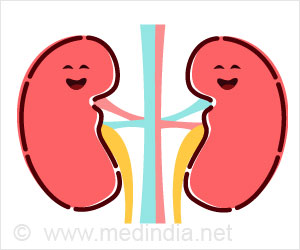
People with knee osteoarthritis (OA) often avoid doing exercise, reports a new study.
Knee osteoarthritis patients refrain from doing exercise, even if they are told it can reduce the pain and stiffness caused by the condition. That’s according to doctors at the University of South Australia, who found people — despite them knowing the opposite to be true — to ‘unconsciously believe’ they could further damage a gammy knee if they exercise on it.
Regular exercise is the best medicine for people with knee osteoarthritis (OA). #Kneeosteoarthritis #kneepain #kneeinjury’
Read More..
“While physical activity is known to ease symptoms, only one in 10 people regularly exercise,” the researchers said, finding some to deem exercise as ‘dangerous’ even if they have been given medical advice to the contrary.
Is Exercise Good for Knee Osteoarthritis Patients?
“Research shows that physical activity is good for people with knee OA (1✔ ✔Trusted Source
Physical Activity and Exercise Therapy Benefit More Than Just Symptoms and Impairments in People With Hip and Knee Osteoarthritis
), but most people with this condition do not move enough to support joint or general health,” said Brian Pulling of the university’s medical research centre.
The “world first” findings were published in Pain, a medical journal, and were based on a word and image questionnaire in which participants assessed safety and danger.
The team found people with knee osteoarthritis to be more wary of exercise than others, including people with other leg injuries (2✔ ✔Trusted Source
People with painful knee osteoarthritis hold negative implicit attitudes towards activity
).
“People with painful knee osteoarthritis hold heightened implicit threat–activity associations relative to both people without knee pain and people with non-knee lower limb pain,” they reported.
Advertisement
Helping Knee Injury Patients to Get Ready to Move
“Having access to more accurate and insightful information will help health professionals better support their patients to engage with activity and exercise,” said Tasha Stanton, a professor at the university, who added that the team’s work “may also open opportunities for pain science education, exposure-based therapy, or cognitive functional therapy.”
That said not only are the findings relevant to treating knee injuries, they could hint at something long observed in human nature. “What people say and what people do are often two different things,” said Stanton.
Advertisement
References:
- Physical Activity and Exercise Therapy Benefit More Than Just Symptoms and Impairments in People With Hip and Knee Osteoarthritis – (https://www.jospt.org/doi/10.2519/jospt.2018.7877)
- People with painful knee osteoarthritis hold negative implicit attitudes towards activity – ( https://journals.lww.com/pain/abstract/9900/people_with_painful_knee_osteoarthritis_hold.579.aspx)
Source-IANS



